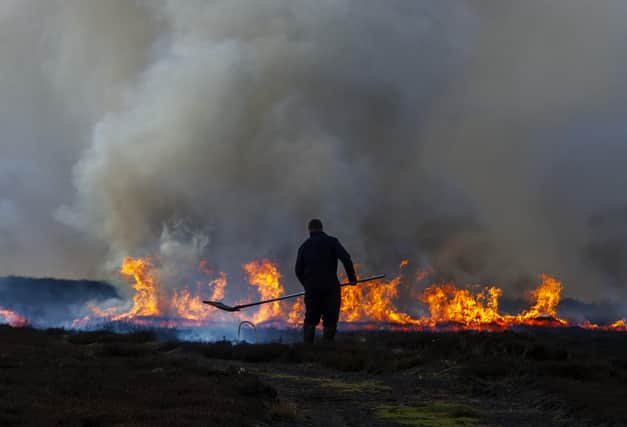Why debate on grouse moor heather burning in Yorkshire is so heated


The North York Moors are generally associated with tranquillity and beauty – but they are also central to one of the most contentious issues in Yorkshire, that of burning to manage the land for grouse shooting.
This dramatic image shows a controlled heather burn on the moors above Castleton earlier this month; an activity seen in very different ways by different people.
Advertisement
Hide AdAdvertisement
Hide AdThe RSPB has hit out at intensive grouse moor management activities such as burning by claiming it is damaging important habitats and contributing to climate change. A recent report also suggested there is a correlation between raptor persecution and land managed for driven grouse shooting in North Yorkshire.
The Moorland Association, which represents grouse moor owners and managers in England, unsurprisingly has a very different opinion arguing that grouse moor management is an important conservation tool, with controlled heather burning playing “a key role in the fight against catastrophic wildfires and is used and supported by fire service chiefs”.
The North York Moors National Park Authority is supportive of the practice and has a statement on its website explaining why.
“Short (young) heather provides food for sheep and red grouse, and shelter and nest sites for some ground-nesting birds,” it says. “Taller (older) heather provides shelter and nest sites for birds and other wildlife.
Advertisement
Hide AdAdvertisement
Hide Ad“However, if left undisturbed, heather plants will live for over 20 years and the stems eventually become very tough and woody.
“Consequently, gamekeepers manage the heather by burning it when the stems get to about wellie-top height. They burn different patches each year in rotation, so that there are always areas of short heather and tall heather close together.”
The authority says that burning over winter and early spring when there are no nesting birds through small and carefully controlled fires ultimately “creates a more diverse habitat, which is better for many other plants and animals too”.
Technical information: Nikon D3s, 200mm lens, 1/1000th second @ f7.1, ISO 400